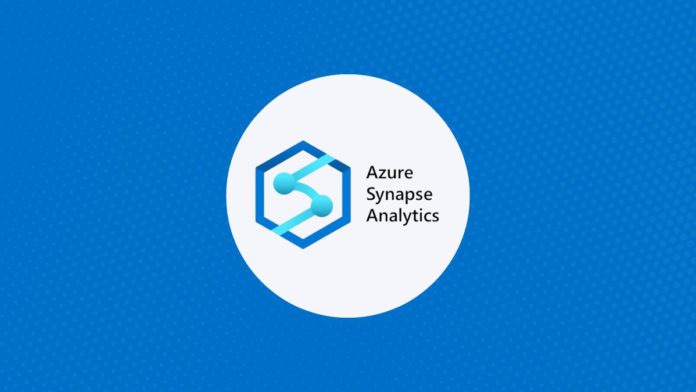You usually have to utilize different tools to store, integrate, and analyze data to make better decisions for critical business operations. There are some tools that enable you to perform all these tasks in the same ecosystem. Microsoft Azure Synapse Analytics is one such solution that offers a unified data storage, integration, analytics, and visualization environment.
Let’s learn what is Azure Synapse Analytics, along with its features, advantages, and disadvantages, to gain meaningful data insights and enhance business performance.
What is Azure Synapse Analytics?
Microsoft Azure Synapse Analytics is a cloud-based analytics service that offers a consolidated platform for data warehousing and big data analytics. You can use Azure Synapse as a unified solution to perform data integration, analysis, and warehousing tasks. This is in contrast to other conventional analytics platforms that require you to use multiple tools for different data processing stages.
To manage and analyze data, you can first extract data from relevant sources and load it into Synapse using Azure Data Factory. It is an Azure cloud-based data integration service that simplifies data ingestion for further querying and analysis.
In Synapse Analytics, you can store and query relational and non-relational data using simple SQL commands. To facilitate faster data querying, Synapse offers a massively parallel processing (MPP) architecture in which data is distributed and processed across multiple nodes.
In addition, Synapse supports both serverless on-demand and provisioned queries. In serverless on-demand queries, you can directly query data stored in Azure Storage or Data Lake without managing server infrastructure. On the other hand, in provisioned data querying, you have to manage compute and storage infrastructure on your own.
After querying, you can integrate Azure Synapse analytics with Power BI, a data visualization software, to conduct effective data analytics. It enables you to create interactive dashboards and reports; their outcomes help you make well-informed business decisions.
Key Features of Azure Synapse Analytics
Synapse Analytics offers various capabilities to help you simplify your data-related tasks. Some of its key features are as follows:
Dedicated SQL Pool
SQL Pool is the data warehousing solution supported by Azure Synapse Analytics. It was earlier known as SQL Data Warehouse (SQL DW). Here, you can store and query petabyte-scale data with the help of PolyBase, a data virtualization feature that enables you to access data without migration. Using PolyBase, you can import or export data stored in source systems such as Azure Blob Storage and Azure Data Lake into SQL Pool.
Workload Management
A data warehouse workload consists of key operations such as data storage, loading, and analysis. Azure Synapse Analytics allows you to manage the resources required for data warehousing tasks through workload classification, importance, and isolation.
Workload classification is the process of dividing workloads based on resource classes and importance. The resource classes are the pre-defined resource limit of Synapse SQL Pool, within which you can configure resources for query execution. On the other hand, workload importance refers to the order in which resources should be allocated for different workloads based on their criticality.
You can group workloads according to the set of tasks using the CREATE WORKLOAD GROUP statement. For example, a workload group named ‘wgdataloads’ will represent the workload aspects of loading data into the system. You can reserve resources for workload groups through the process of workload isolation. This can be done by setting up the MIN_PERCENTAGE_RESOURCE parameter to greater than zero in the CREATE_WORKLOAD_GROUP syntax.
Apache Spark Pool
Apache Spark is an open-source and distributed data processing engine that facilitates big data analytics. You can create and configure Apache Spark Pool while utilizing Azure Synapse. Compatible with Azure Data Lake Generation 2 storage and Azure storage, Spark makes it easier for you to manage big data workloads. Tasks like data preparation, creating ML applications, and data streaming can be streamlined with the help of Spark in Azure Synapse.
Workspaces
Azure Synapse Analytics workspace is a collaborative environment that assists you and your team in working together on enterprise data analytics projects. It is associated with your Azure Data Lake Storage Gen 2 account and file system, which allows you to temporarily store data.
Data Security
Azure Synapse Analytics offers a multi-layered mechanism to help you ensure data security. It supports five layers: data protection, access control, authentication, network security, and threat protection. Using these layers, you can securely store, query, and analyze sensitive data in Azure Synapse.
Advantages of Using Azure Synapse Analytics
Azure Synapse Analytics is a versatile analytics solution. Some advantages of Azure Synapse are as follows:
Scalability
The MPP architecture of Azure Synapse Analytics enables you to distribute queries across multiple nodes, facilitating data processing at a petabyte scale. You can further adjust Synapse Analytics’s resources according to your workload requirements by utilizing the on-demand scaling feature. As a result, you can query and analyze large volumes of data cost-effectively.
Enhanced Visualizations
You can leverage the chart option in Synapse notebooks to create customized graphs and visualize data without writing codes. For advanced visuals, you can use the Apache Spark Pool in Azure Synapse Analytics, as it supports various Python visualization libraries, including Matplotlib and Seaborn. You can also integrate Synapse Analytics with Power BI to create interactive business dashboards and reports.
End-to-end Support for Machine Learning
Azure Synapse Analytics offers machine learning capabilities by allowing you to train ML models with the help of Apache Spark Pool. It supports Python, Scala, and .NET for data processing. After training, you can monitor the performance of ML models through batch scoring using Spark Pool or the PREDICT function in SQL Pool. In addition, SynapseML is an open-source library supported by Synapse Analytics that helps you develop scalable ML pipelines.
Disadvantages of Using Azure Synapse Analytics
There are certain disadvantages of using Azure Synapse Analytics. Some of these are as follows:
Limited Functionalities
While loading data to Azure Synapse Analytics, your source table row size should not exceed 7500 bytes. Along with this, primary keys in source tables with real, float, hierarchyid, sql_variant, and timestamp data types are not supported. Such restrictions make Azure Synapse Analytics an inefficient solution for diverse data querying.
Complexity
To fully utilize Azure Synapse Analytics, you must understand how Apache Spark, Power BI, and T-SQL work. Because of this, the learning curve for Synapse Analytics is higher, making it a complex analytics solution.
Costs
The pricing structure of Azure Synapse Analytics is pay-as-you-go, allowing you to pay only for the services you use. However, using Synapse Analytics can become expensive for big data workloads. The higher usage cost impacts the budget of downstream critical business operations.
Use Cases of Azure Synapse Analytics
You can use Synapse Analytics to conduct numerous enterprise workflow operations. Here are some important domains in which Azure Synapse Analytics is used:
Healthcare Sector
You can use Azure Synapse Analytics in the healthcare industry to integrate and analyze patient data to provide personalized treatments. Synapse Analytics also assists in predicting disease outbreaks through symptom analysis and identifying infection rates and potential hotspots. It allows you to ensure sufficient beds and staff availability to provide uninterrupted healthcare services.
Retail Industry
In the retail sector, you can use Synapse Analytics to integrate and analyze data from data systems like CRM, ERP, or social media data. It helps you to understand customers’ preferences and purchasing habits. You can use the outcomes to prepare targeted marketing campaigns and offer personalized recommendations. Synapse Analytics also enables you to analyze inventory data and forecast product demand to avoid understocking or overstocking.
Finance Sector
You can use Azure Synapse Analytics in banks and financial institutions to analyze datasets and detect suspicious transactions. This helps you to identify fraudulent practices and take preventive measures to avoid monetary losses.
Conclusion
Microsoft Azure Synapse Analytics is a robust platform that offers a unified solution to fulfill modern data requirements. This blog gives a brief overview of Azure Synapse Analytics and its important features. You can leverage these features for effective data analytics and to build and deploy ML applications in various domains.
However, Synapse Analytics has some disadvantages that you should consider carefully before using it for your data workflows. You can take suitable measures to overcome these limitations before using Synapse Analytics to make data-based decisions and enhance business profitability.
FAQs
Is Azure Synapse part of Microsoft Fabric?
Yes, Synapse is a part of Microsoft Fabric, a unified enterprise data analytics platform. You can migrate data from Synapse dedicated SQL Pools to the Fabric data warehouse for advanced analytics.
Which Azure Data Services are connected by Azure Synapse?
The Azure services connected to Synapse are as follows:
- Azure Purview
- Azure Machine Learning
- Microsoft Powe BI
- Azure Active Directory
- Azure Data Lake
- Azure Blob Synapse


